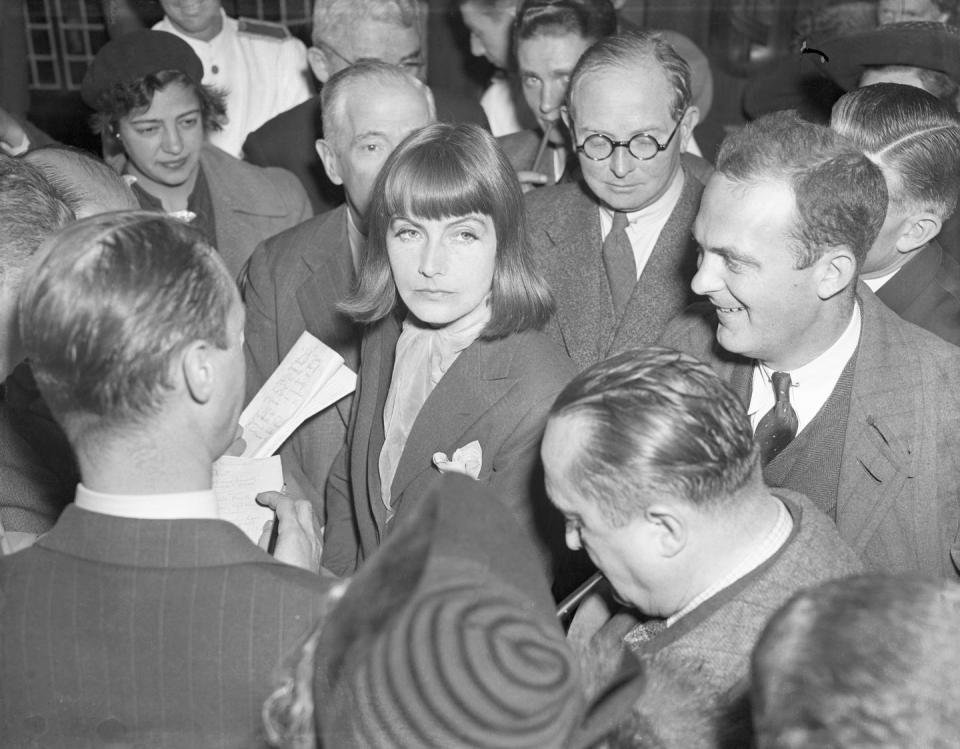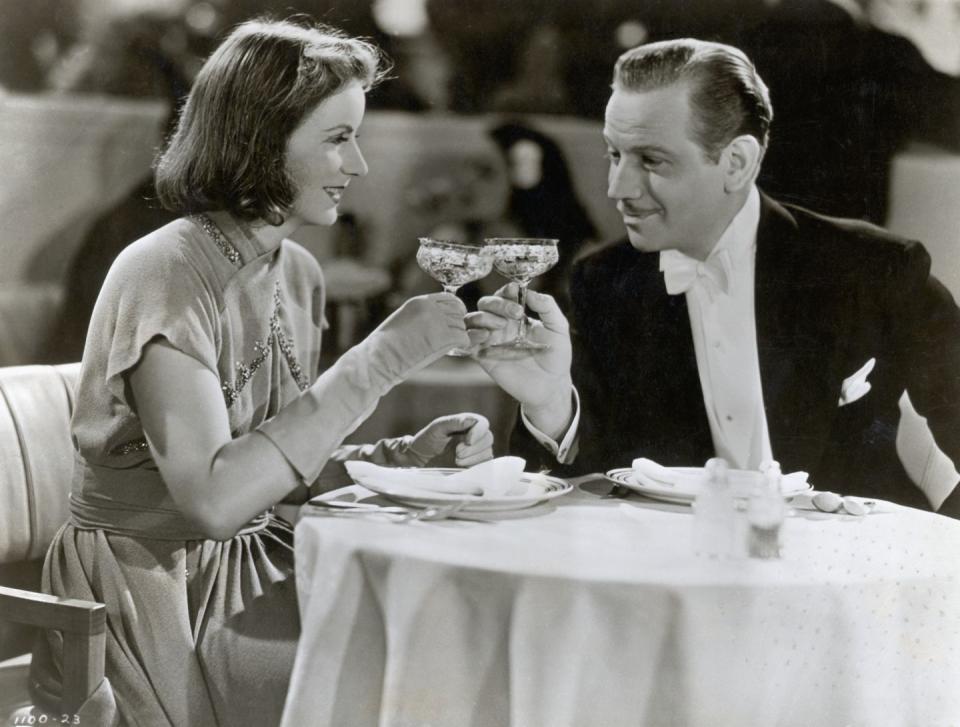Inside Greta Garbo's Secret Life in New York City

"Hearst Magazines and Yahoo may earn commission or revenue on some items through the links below."
“I don’t have to live in New York,” Greta Garbo once said. “I could live in hell.”
For a woman who had become synonymous with solitude, she might as well have. Garbo helped define what we think of as the Golden Age of Hollywood, first as a silent film star and then, triumphantly, as a major MGM star in the 1930s. Yet even at the height of her fame, her fanatical desire for privacy was as famous as she was herself. All of which conspired to make her 50 years of retirement spent walking the streets of New York City into a cat-and-mouse game with tourists and photographers alike. So ubiquitous a presence was she that even when they didn't intend to, photographers couldn't help snapping Garbo pics. One of Bill Cunningham's first photos in the New York Times was of Garbo in a nutria coat; when he took it, he was so focused on the coat that he hadn't recognized the woman wearing it.
By the time she was firmly ensconced in Manhattan in the mid 1950s, Garbo was wealthy enough to live anywhere. Yet despite family in Sweden and two decades in Los Angeles, she settled in New York City, becoming as famous a New Yorker as she was a movie star. Garbo sightings were reported breathlessly; even famous fans were awkward and frighteningly intent when they spotted her. (One day, a limousine screeched to a halt on Central Park West, and a wild-eyed young woman leaped out. Garbo escaped, while her companion held the woman back. The fan turned out to be international film star Liv Ullmann, then set to star in a Broadway revival of Anna Christie.) Choosing a life that involved so many people so close at hand seems incomprehensible for a woman like Garbo. But then, much of Garbo’s post-Hollywood life makes as much sense as her abrupt retirement at age 35.

To Garbo watchers and the world at large, Garbo’s post-Hollywood life remained as glamorous as that of an MGM star. She summered in Klosters, Switzerland, and traveled the world with bold-faced names such as Cécile Rothschild, Aristotle Onassis, and Deborah Kerr. She collected paintings by Renoir and the Expressionist Alexej von Jawlensky. She attended the theater with a variety of friends, until photographers drove her away. And while her closets were stuffed with hundreds of gowns, she boasted to decorator Billy Baldwin that she had never worn a single one. (Intriguingly, a proposed collaboration with Halston came to an abrupt end when her first visit to his salon was capped off by an encounter with paparazzi.)
Eighty years after her final film, Garbo’s mystique remains as impenetrable as ever. Everything about her is the subject of speculation. Bette Davis called her acting “witchcraft.” Her sexuality remains a mystery. And she never explained her sudden withdrawal from public life.
The latest attempt to impose sense upon this sui generis icon is Robert Gottlieb’s Garbo, a combination biography and cultural history that shares a name with Barry Paris’s 1994 biography. But both books are stymied by one intractable fact: The second half of Garbo’s life was uneventful.

In retrospect, those 50 years of Garbo’s quiet routines—what many of her friends called, with sighs, her “selfishness”—seem like an early call-to-arms for self-care. Between the time of her arrival at MGM in 1924 and her final movie in 1941, Garbo starred in 24 feature films. (Meryl Streep has made 74 over her entire career.) Then she never made a movie again, preferring a life of errands, trips abroad, long phone calls with confidantes, and an occasional lover. That kind of diligent, disciplined leisure deserves respect; but for a biographer, half a life spent ambling in antique stores on Third Avenue can be frustrating. For modern fans, it can be inspiring.
“I like to have time for doing nothing,” Garbo once said. She spent five decades proving how much she meant it. From her seven-room apartment at 450 East 52nd Street, Garbo designed the template for what her life would be until her death in 1990. Decorated in various shades of pink, purple, and dusty rose—her kitchen curtains were such a violent pink that one confidante claimed you could spot them from 15 blocks away on the FDR—the apartment became her refuge. There, her daily routine was simple to the point of monotony. She ate toast in front of the black-and-white TV in her bedroom (she claimed she couldn’t “stand the bother” of buying a color set); she went shopping for fruits and vegetables; she rested at home; she went out again for an afternoon walk. And she was always home by 5:30, after which she ate dinner on a tray in front of her bedroom TV.

While other stars crafted successful second acts or slipped into semi-obscurity and retirement, Garbo walked away and never stopped. Asked what she was planning to do one day, she replied, “I don’t know. I walk. That’s what I’m doing. I walk.”
She did not always walk alone, of course. Her affairs in Hollywood were well-known, whether publicly (a long liaison with John Gilbert) or among those in the know (a relationship with Mercedes de Acosta). But while her sexuality remains as unknowable as her reasons for leaving film, one relationship continues to baffle, one to which Gottlieb dedicates an entire chapter: an allegedly sexual affair with photographer and designer Cecil Beaton.
Beaton was the pursuer in the relationship; Garbo the willing but occasionally unyielding prize. Though Beaton boasted that he was the only man who ever physically satisfied Garbo (a claim backed up by Tennessee Williams, who hardly seems capable of knowing), their mutual confidante Sam Green told Beaton’s biographer Hugo Vickers that the photographer was “too star-struck to star-fuck.”
Whatever the two had together was irredeemably destroyed upon the publication of Beaton’s diaries in 1972, revealing to the world his version of their relationship. Garbo never acknowledged the public betrayal, though many of Beaton’s close friends were deeply offended on her behalf. They met only once more, at Green’s insistence. Beaton had suffered from a series of strokes, and Garbo and Green stayed at his home. Seeing a frail Beaton making his way to the dining room, Garbo said, “Well, I couldn’t have married him, could I? Him being like this!”
An attachment like marriage would have impeded Garbo’s independence. Instead, she lived exactly the life she designed, one that others still find too prosaic for such an enigmatic beauty. Everything was on her own terms, even friendships. Most friends didn’t even have her number; they simply waited for her to call them.
Even 30 years after her death, glamour and intrigue are forced upon her later years as thoroughly as they had been during her reign in Hollywood and subsequent retirement.
In typical Garbo fashion, the only direct comment she ever made on her withdrawal from films is as practical as the rest of her post-Hollywood life.
“I had made enough faces,” she said. And for the rest of her life, she offered up only one.
You Might Also Like


